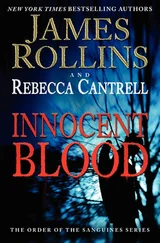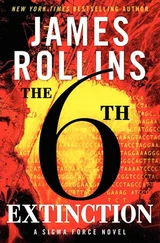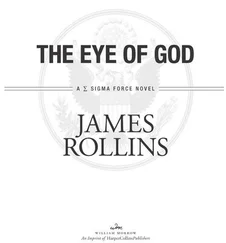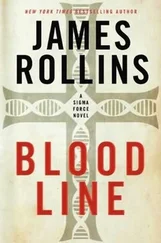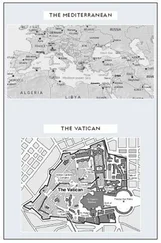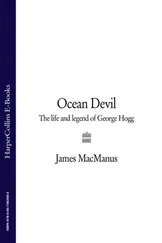James Rollins - THE DEVIL COLONY
Здесь есть возможность читать онлайн «James Rollins - THE DEVIL COLONY» весь текст электронной книги совершенно бесплатно (целиком полную версию без сокращений). В некоторых случаях можно слушать аудио, скачать через торрент в формате fb2 и присутствует краткое содержание. Жанр: Триллер, на английском языке. Описание произведения, (предисловие) а так же отзывы посетителей доступны на портале библиотеки ЛибКат.
- Название:THE DEVIL COLONY
- Автор:
- Жанр:
- Год:неизвестен
- ISBN:нет данных
- Рейтинг книги:5 / 5. Голосов: 1
-
Избранное:Добавить в избранное
- Отзывы:
-
Ваша оценка:
- 100
- 1
- 2
- 3
- 4
- 5
THE DEVIL COLONY: краткое содержание, описание и аннотация
Предлагаем к чтению аннотацию, описание, краткое содержание или предисловие (зависит от того, что написал сам автор книги «THE DEVIL COLONY»). Если вы не нашли необходимую информацию о книге — напишите в комментариях, мы постараемся отыскать её.
THE DEVIL COLONY — читать онлайн бесплатно полную книгу (весь текст) целиком
Ниже представлен текст книги, разбитый по страницам. Система сохранения места последней прочитанной страницы, позволяет с удобством читать онлайн бесплатно книгу «THE DEVIL COLONY», без необходимости каждый раз заново искать на чём Вы остановились. Поставьте закладку, и сможете в любой момент перейти на страницу, на которой закончили чтение.
Интервал:
Закладка:
Then there was Gray. He'd sunk into a dark pit of despair, but what would arise out of it: a stronger man or a broken one?
Only time would tell.
So Painter kept quiet for all their sakes. Even coming here was not without risk, but he had to chance it.
Reaching the top of the steps, he crossed under the dome and into the Capitol Rotunda. The huge vaulted space echoed with voices. He sought the second-floor gallery, where giant twelve-by-eighteen-foot canvases circled the dome's walls. He found what he was looking for easily enough on the south side. It was the most famous painting up here: Declaration of Independence by John Turnbull.
He stood before it, sensing the waft of history that blew through this space. He stared at the brushstrokes done by a painter's hand centuries ago. But other hands had also been involved in this piece, just as influential. He pictured Jefferson guiding Turnbull, preparing this masterpiece.
Painter gazed up, studying every inch of it, connecting to that past.
The massive canvas depicted the presentation of the Declaration of Independence to Congress. Within this one painting, John Turnbull attempted to include a portrait of everyone who signed the Declaration, a memorial to that pivotal event. But Turnbull couldn't manage to fit everyone into it. Yet, oddly enough, he did manage to get five people painted in there who had never signed the final draft.
So why include them?
Historians had always wondered.
In his research, Painter read how John Turnbull had offered some obfuscating answers, but none satisfactory-and it was indeed Thomas Jefferson, master of ciphers and codes, who oversaw the completion of this masterwork.
So was there another reason?
At least Meriwether Lewis believed so.
The words deciphered from the buffalo hide ran through Painter's head as he stared at the strokes of oil on the canvas: Jefferson will leave their name in paint. You can find it thusly: In the turning of the bull, find the five who don't belong. Let their given names be ordered revealed by the letters G, C, R, J, T and their numbers 1, 2, 4, 4, 1.
It wasn't a hard cipher to decode.
Turning of the bull referred, of course, to Turnbull, who had been commissioned to do many public paintings in early America.
Find the five who don't belong indicated the five nonsigners depicted on the canvas:
John Dickinson
Robert Livingston
George Clinton
Thomas Willing
Charles Thomson
The last of that list, Thomson, did sign an early draft, but he was not invited to inscribe the famous version with its fifty-six signers.
The next bit of the passage- Let their given names be ordered revealed by the letters G, C, R, J, T-simply meant taking their first names and putting them in the order of those five letters listed.
George
Charles
Robert
John
Thomas
Then all that needed to be done was to select the corresponding letter in each name that matched the number: 1, 2, 4, 4, 1.
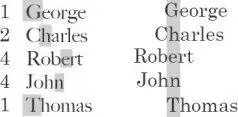
The name of Meriwether Lewis's enemy, the traitorous and secretive family who had confounded the early Founding Fathers, was Ghent .
It seemed meaningless at first-until Painter pondered it more, especially in light of the conversation he had had with Rafael Saint Germaine. The Frenchman had mentioned that the Guild was really a group of ancient families who had been accumulating wealth, power, and knowledge over centuries-possibly millennia-until in modern times only one family remained. His story closely matched Lewis's tale of the purging of America, in which one family turned out to be rooted too deeply to remove, with ties to slavers rich beyond measure.
Were these two stories speaking of the same family?
Ghent.
Again, Painter might not have attributed much to this code breaking, except for one nagging coincidence. Ghent was a city in Belgium . That country had kept popping up of late: the team who attacked Gray in Iceland had come from there, as had that smaller burst of neutrinos similar to those at Fort Knox.
So Painter had kept on digging. Ghent was a common surname for people from that city. Someone was John of Ghent or Paul of Ghent . But in more modern times you became simply John Ghent or Paul Ghent . And sometimes just the anglicized pronunciation was used, as it was easier to spell phonetically.
And that's where Painter found the truth-or so he believed.
Not that he could do anything about it.
He stepped farther back from the painting, taking in its entirety. He studied the figures of Jefferson and Franklin, picturing them standing before this same painting, faced with the same challenge and threat. His own hands were tied as surely as the Founding Fathers' had been.
During Painter's research concerning the suspected family, he had discovered that they indeed had roots going back to Ghent, had even used that name before extending their reach to America. They'd been in the colonies at the beginning, entrenched in the slave trade to such an extent that any attempt to remove that single family by force could have ripped the new union apart.
They were the weed in the garden that could not be pulled.
And they still were today.
As America grew, so did this family, rooting and entwining into multiple industries, corporations, and yes, even in the halls of government. They were a thread woven throughout the fabric of this country.
So was it any wonder that Sigma could make no headway against them?
Rafael had said this ancient group of families- the secret in secret societies -went by many names, whispers that were only shadows: the Guild, Echelon, familles de l' toile, the star families. But Painter knew the true name of the enemy-then and now-anglicized for the American tongue.
They were the Kennedys of the South.
But no longer were they called Ghent .
Now they were called Gant .
As in President James T. Gant.
Author's Note to Readers: Truth or Fiction
While I'd like to say this entire story is true, that would, of course, be fiction . So for these last few pages, I thought I'd separate the wheat from the chaff, the truth from the fiction. The three big-ticket items that became the foundation for this book concern Mormonism, early Native Americans, and our Founding Fathers. As you might imagine after reading this novel, these topics do intertwine. But I'll try to break them down as clearly as I can:
Mormonism.While I was raised Roman Catholic, I've always been fascinated by the Book of Mormon, especially by its take on early America. The specific mystery at the heart of this text is the Mormon belief that Native American clans originated from a fleeing lost tribe of Israelites. While modern DNA emphatically disputes this, pointing to an Asiatic origin for early American natives, I read a fascinating paper that can be found online, a paper that balances Mormon belief with modern genetic science: "Who Are the Children of Lehi?" by D. Jeffrey Meldrum and Trent D. Stephens.
In this book I also broach the commonality between Hebrew and Native American languages (specifically Uto-Aztecan). If you'd like to know more (I only mention a few examples in the book, but there are hundreds), check out the article that can be found online: "Was There Hebrew Language in Ancient America?" by John L. Sorenson.
According to the Book of Mormon, John Smith translated the text from a collection of gold plates written in a language called "reformed Egyptian," an advanced form of Hebrew with elements of Egyptian. I borrowed a language from the Middle Ages, named the Alphabet of the Magi, to stand in for that script, as the Magi Alphabet was also derived from Hebrew. Also caches of strange metallic plates-golden and otherwise-have been discovered throughout the Americas. Most are hoaxes, but some come with some substantial provenance. I'll leave their veracity up to you to decide.
Читать дальшеИнтервал:
Закладка:
Похожие книги на «THE DEVIL COLONY»
Представляем Вашему вниманию похожие книги на «THE DEVIL COLONY» списком для выбора. Мы отобрали схожую по названию и смыслу литературу в надежде предоставить читателям больше вариантов отыскать новые, интересные, ещё непрочитанные произведения.
Обсуждение, отзывы о книге «THE DEVIL COLONY» и просто собственные мнения читателей. Оставьте ваши комментарии, напишите, что Вы думаете о произведении, его смысле или главных героях. Укажите что конкретно понравилось, а что нет, и почему Вы так считаете.

